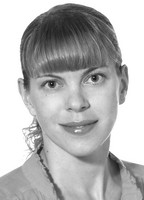Fitness technology models for academic physical education improvement using ESTECK System Complex
Фотографии:
ˑ:
Teoriya i praktika fizicheskoy kultury №9 2017, pp.30-32
PhD, Associate Professor T.N. Shutova
Plekhanov Russian University of Economics, Moscow
The article considers the ways to improve the academic physical education by fitness technology models customised for the student’s “fitness profile” health groups composed based on the test data provided by ESTECK System Complex including the body component analysis, digital heart rate variability analysis etc. An education process experiment under the study was performed at Plekhanov Russian University of Economics. Subject to the study were 1155 first-to-second year students including 805 female and 350 male subjects.
The students were tested with “good” functionality rates albeit low responses to physical loads, low heart rate regulation, particularly in the female subjects; and the fitness technologies were applied in the primary stage of the recreation and rehabilitation process.
The fitness models for the basic health group students were designed based on the modern sporting and recreational fitness technologies applying elements of athletic gymnastics, CrossFit, martial arts, functionality building training, mixed systems, TRX etc. And models for the special health group males were designed based on the relevant recreation and rehabilitation technologies with elements of aquatic fitness, special body-building systems, billiards, all-round fitness trainings, kettlebell gymnastics, adapted combined systems etc. Females of the basic health group were recommended to apply competitive disciplines in the second year; whilst their first-year training models were dominated by recreational disciplines including aquatic aerobics, athletic gymnastics, low- and mean-intensity step-aerobics, medium-intensity Tae Bo, and combined systems. And fitness models for the females of the special health group were designed to include elements of aquatic fitness, billiards, pilates, yoga, body-building, health gymnastics, physical therapy, fitball-gymnastics and stretching.
Keywords: students, fitness technologies, physical education, individualized approach, basic and special health groups, diagnostics.
References
- Andryushchenko L.B., Allyanov Y.N. Samoobrazovatelnaya deyatelnost po distsipline «Fizicheskaya kultura» v vuze [Self-study of Physical Education in university]. Moscow: FU publ., 2014, 192 p.
- Andryushchenko L.B., Andryushchenko O.N. Kompetentnostno orientirovannaya rabochaya programma po distsipline «Fizicheskaya kultura» [Competency-building Physical Education work program]. Materialy Vserossiyskoy nauchno-metodicheskoy konferentsii "Strategiya razvitiya sportivno-massovoy raboty so studentami" [Proc. All-Rus. scie.-method. conference "Strategy for the development of sports and mass work with students"]. 2015, pp. 24-30.
- Beletskiy S.V. Vliyanie informatsionnykh tekhnologiy na formirovanie kompetentsiy po teoreticheskim osnovam fizicheskoy kultury [Building competences on theoretical foundations of physical education using information technologies]. Vestnik Rossiyskogo ekonomicheskogo universiteta imeni G.V. Plekhanova, 2015, no. 4 (82), pp. 14-22.
- Burkhanov A.I. Fizicheskaya kultura kak vazhny faktor formirovaniya zdorovya natsii [Physical education as key factor in national health provision]. Materialy mezhdunar. nauch.-prakt. konf. "Sovremennye problemy i perspektivy razvitiya fizicheskoy kultury, sporta, turizma i sotsialno-kulturnogo servisa" [Proc. internat. res.-pract. conf. "Physical culture, sports, tourism and sociocultural services: current problems and prospects for development"]. Naberezhnye Chelny: Volga region SAPCST publ., 2015, pp. 49 – 51.
- Grigoryev V.I., Davidenko D.N., Malinina S.V. Fitnes-kultura studentov: teoriya i praktika. Uch. posobie [Students' fitness culture: theory and practice Study guide]. St. Petersburg: St. Petersburg SUEF publ., 2010, 228 p.
- Saykina E.G., Ponomarev G.N. Fitnes-tekhnologii: ponyatie, razrabotka i spetsificheskie osobennosti [Fitness technologies: concept, development and specific features]. Fundamentalnye issledovaniya publ., 2012, pp. 890 - 894.
- Stolyar K.E., Vit'ko S.Y., Pikhaev R.R., Kondrakova I.V. Organizatsionno-metodicheskie podkhody k kompleksnoy otsenke fizicheskoy podgotovlennosti studentov [New institutional and practical system for students' integrated physical fitness rating]. Teoriya i praktika fiz. kultury, 2016, no.9, pp. 9-11.
- Shutova T.N., Kuz'min M.A., Kondrakov G.B., Mamonova O.V. Model integratsii traditsionnykh vidov sporta i fitnesa v fizicheskom vospitanii studentov [Traditional sports and fitness integration model for academic physical education]. Teoriya i praktika fiz. kultury. 2016, no.9, pp. 19-21.
- Shutova T.N., Andryushchenko L.B. Fitnes-tekhnologii dlya povysheniya dvigatelnoy aktivnosti molodezhi na osnove globalnogo podkhoda [Young people's motor activity encouraging fitness technologies based on global approach]. Teoriya i praktika fiz. kultury. 2017, no. 3, pp. 54-56.
- Haff G.G., Haff E.E. Training integration and periodization. NSCA’s program design. National Strength and Conditioning Association; ed. J.R. Hoffman. Champaign, IL: Human Kinetics, 2012, 325 p.



 Журнал "THEORY AND PRACTICE
Журнал "THEORY AND PRACTICE